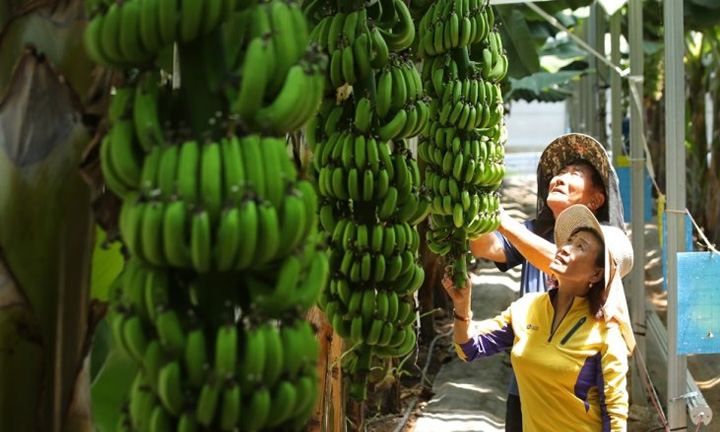SOURCE: The Korea Times
Jeju Island was long considered the only warm-enough region in Korea for commercial banana farming, but climate change is now turning the mainland into a producer of the tropical fruit.
Hong Hong-keum, a farmer in Haenam, the southernmost tip of the Korean Peninsula, told The Korea Times Wednesday that she and her husband are looking forward to their first ― and Haenam’s first ― banana harvest next month.
They planted 470 banana trees last year to adapt themselves to “changing circumstances” as the impact of climate change on agriculture was felt among many farmers, she said.
According to the agricultural technology center in North Chungcheong Province, the number of people investing in banana farming has surged in recent years.
“There are about 40 banana farms in Korea, including two (at Cheongju and Chungju) in our region,” Park Eui-kwang, a researcher at the center, said. “Another farmer in Jecheon recently contacted the center for support before starting banana farming later this year.
“Climate change is obviously affecting Korea’s farming industry.”
About 99.7 percent of all bananas consumed here are imported, mainly from the Philippines, and most of the rest is produced on Jeju. But with more farmers exploring the field, this soon could change.
The researcher says the commercial potential of “Korean bananas” is high as samples from there show a higher sugar content than that found in imported ones.
In 2015, the Rural Development Administration under the Ministry of Agriculture, Food and Rural Affairs set up a department dedicated to researching new agricultural and floricultural fields to prepare for the expected effects of climate change. Local governments across the country also offer support for farmers who break fresh ground in their businesses.
Papaya, another tropical fruit known for its sweet orange and juicy pulp, has been produced by farmers across the country, including in Andong, Gokseong and Miryang.
Lee Yong-kwon, who made headlines last year after successfully cultivating bananas from 10 trees in Taean, South Chungcheong Province, said he has been farming other tropical fruit, including papaya and guava, as well as coffee and olives this year.
Local governments are hopeful that tropical fruits could boost farmers’ incomes. But some experts say farmers should tread carefully because change may not be as fast as they expect.
“In most Korean regions, average temperatures in winter are still too low for banana growth,” a researcher at the agricultural technology center in Pohang said. “So farmers have to spend a lot of money to keep temperatures in greenhouses above certain levels. This is the biggest challenge for farmers who want their businesses to be profitable.
“This is why many are keen to make long-term contracts with schools for providing food and field trips to students. It is hard for farmers to expect high profits just from selling bananas to consumers at this point.”

